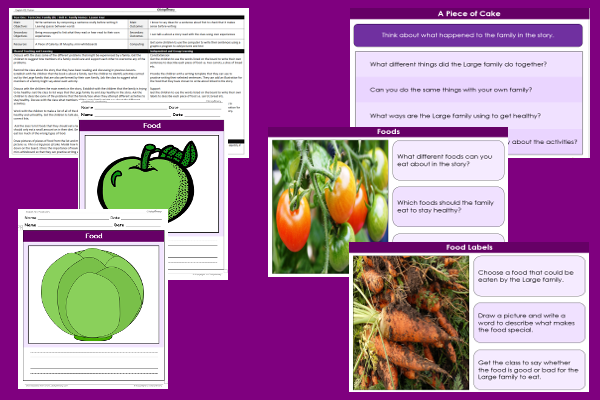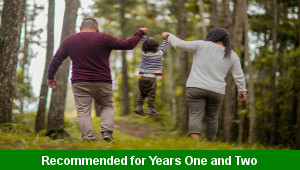Lesson Four – Food Labels

This English teaching pack for Key Stage One gets the children to select descriptive vocabulary words that can be added to labels describing some of the different types of foods that could be eaten by a family for breakfast, lunch and dinner.
The class can differentiate between healthy and unhealthy foods that a family could eat for a range of meals to link with events in a narrative story with a familiar setting.
Download this teaching pack including a lesson plan, classroom activities and an interactive presentation to select descriptive vocabulary words that can be added to labels describing some of the different types of foods that could be eaten by a family for breakfast, lunch and dinner
Activities in this teaching pack include a template to select and record illustrations and descriptive vocabulary words that can be used on different labels describing a type of food that could be eaten by a family and classified as healthy or unhealthy.
The interactive presentation gets the children to explore descriptive vocabulary words that can be used to add to labels describing different foods that could be eaten by a family.
This lesson is part of an English scheme of work to get the children to explore the sequence of events and characters in a story with a familiar setting, identify and spell words with the /v/ sound at the end of words and compose sentences orally before writing. There are teaching activities for shared learning, differentiated worksheets to support independent learning and interactive presentations to introduce concepts and key skills.
-

Maths Measurement Assessment
Assess abilities in estimating, measuring and comparing a range of different measurements for length, mass and capacity
-

Family Life
Investigate and reflect on some of the special events and experiences that might happen in the life of a family
-

Final Sounds Word Guess
Practise playing some guessing and matching games to identify the spelling and meaning of words with different final sounds
-

Building Reports
Explore how to collect facts and information to work with when composing and presenting non-chronological reports about buildings that can be found in the local area
